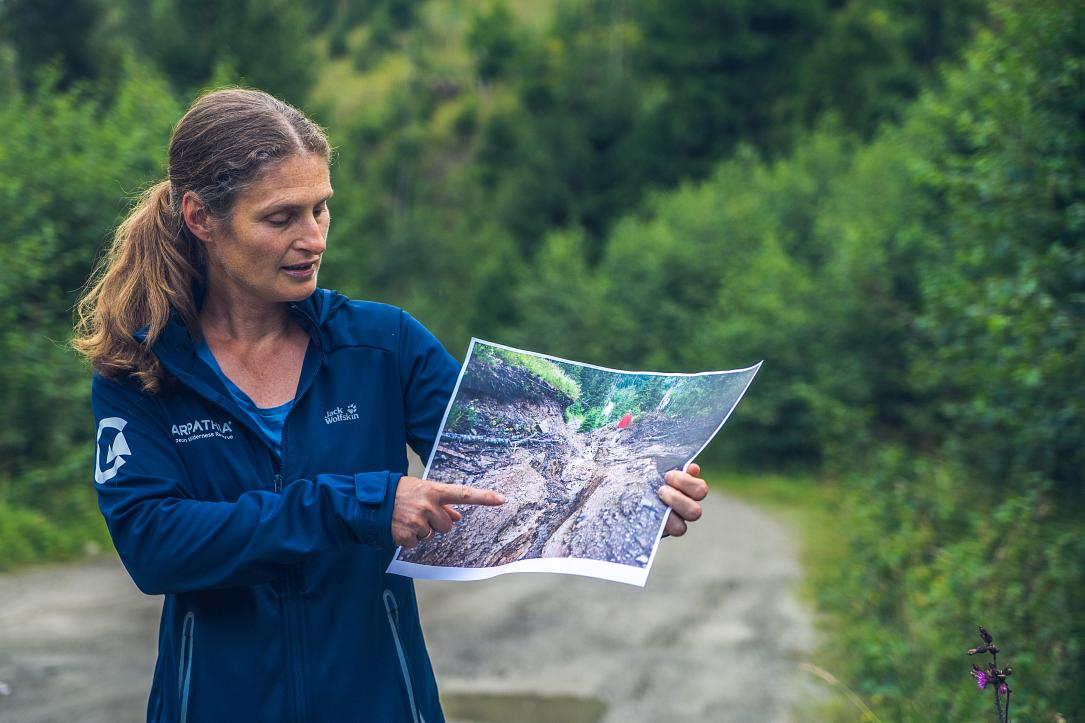This is native content supported by Fundatia Conservation Carpathia
Protecting Romania’s pristine nature on the path to most important eco-tourism destination in Europe

With its luxurious virgin forests and enormously rich in biodiversity, Romania has a huge potential to become the most important eco-tourism destination on the continent. But the country’s biggest mistake is trying to copy what other countries do without realizing its own strengths, which is, amongst others, the incredible nature the country hosts, according to two foreign wildlife biologists.
An Austrian and a Bavarian wildlife biologist who came to Romania in the 90s and who chose to stay and work on nature conservation in Romania still consider it the most beautiful country in Europe. Ever since arriving, they were both completely mesmerized by the natural splendors of what they see as one of the wildest in Europe in terms of flora and fauna.
Barbara and Christoph Promberger came to Romania to study wolves, but found a way of life. Both, independently from each other, chose Romania for being home to Europe’s largest wolf population.
Barbara (pictured above) was born and raised in Austria, while Christoph in south-eastern Germany. Christoph visited Romania first in 1992, while Barbara arrived first time in Romania 3 years later.
After studying wolves, bears, and lynx for 10 years, they built themselves a home in Șinca Nouă, a small village in Brașov County, and developed a family there. The proximity of the mountains and its forest and wildlife allowed them the quality of life they were dreaming of.
At the same time, it opened their eyes to the abusive and unhealthy practices of dealing with nature in many parts of Romania. Since 2005, forest clearing has spread like wildfire and old-growth forests have disappeared in the blink of an eye. But Barbara and Christoph Promberger (pictured below) decided they were not willing to let go of their dream: they scaled it up from a personal project into a daring mission of saving the Făgăraș Mountains and developing them into the most important National Park on the continent. This is how Foundation Conservation Carpathia (FCC) started ten years ago, and from then on, little by little, a European and even global network of conservationists developed out of this small initiative.
They started off with a first contact to a wealthy Swiss family, but the network of supporters and philanthropists grew. The foundation also applied for public money from Norway and EU sources and managed to raise until now a total of over € 70 million for the conservation of forests and wildlife in the Făgăraș Mountains. They began to buy forests which were threatened by logging, from small plots of half a hectare to large areas of hundreds of ha and ended up with a total of over 22,000 ha in the south-eastern Făgăraș Mountains by now. In parallel, FCC also grew to now over 60 staff - from local rangers to protect the forests, specialists for protected areas all the way to lawyers to fight for conservation. Next to land conservation, FCC started to fix degraded habitats and reforested more than 600 ha of clear-cuts with planting over 1.8 million saplings, mainly in the upper Dâmboviţa Valley.
In 2011, the project leased the first hunting concession with the goal to change the current system of sport and trophy hunting into a system of protecting wildlife and a focus on mitigating conflicts of wildlife and humans in the vicinity of the villages. In 2017, a second hunting concession was taken and together with adjacent Piatra Craiului National Park, wildlife is now protected on a total of 36,000 ha. Recently, FCC has also initiated CSR partnerships with a number of Romanian corporates, who want to take over responsibility for their own country.
Work with and for local communities began as well as they are considered the key factors in realizing the idea of the iconic Făgăraș National Park. With the help of national and international business specialists, a conservation enterprise programme is currently being developed to change the current extractive economy into a conservation-based economy, where local communities are the real beneficiaries of the natural wealth.
The Făgăraș Mountains National Park plays the central part in their strategy, but the medium-term plan is to create National Parks on 12% of Romania’s surface and have a total of 30% under a form of protection. At some time, it is the authorities that have to take on this vision and to understand the amazing opportunity, nature offers not just for the quality of life for millions of people, but also for sustainable economic development of rural areas.
This is native content supported by Fundatia Conservation Carpathia
(Photo by Razvan Dima for FCC)













